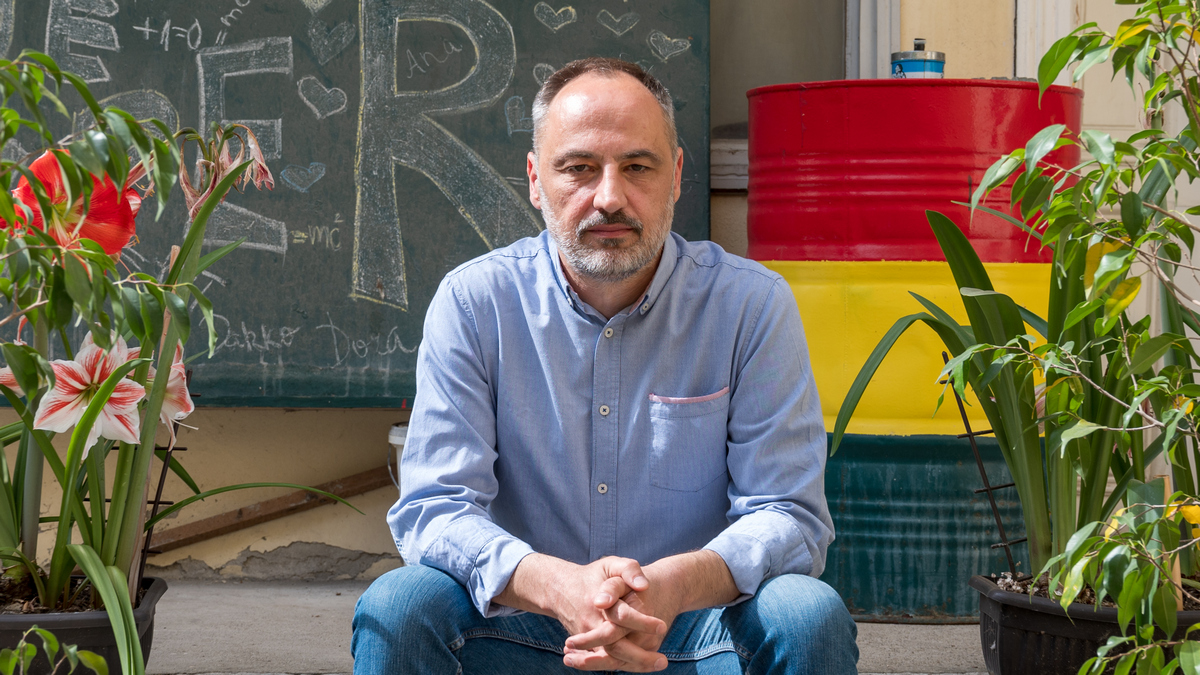Project Title:
Extreme weather events in Serbia – analysis, modelling and impacts
Article Author and Principal Investigator of the Project:
Dr. Vladimir Đurđević
Full Professor, Institute of Meteorology, Faculty of Physics, University of Belgrade

The project titled Extreme Weather Events in Serbia – Analysis, Modeling and Impacts – EXTREMES researches increasingly frequent and intense weather and climate extremes, such as heat waves, Droughts, floods and storms, which have an impact on people and nature and cause damage and losses in our country. Since the year 2000, losses and damages from extreme climate events in our country have been estimated at over 7 billion euros. During the project, our team will use modern and innovative methodological approaches and the latest technologies to explain these events and their cause, and analyze current consequences into possible risks in the future The EXTREMES project aims to provide a detailed analysis of extreme weather and climate events (heat waves, Droughts, heavy rainfall, damage from hail, dense fog, etc.) in the past as well as their projections for the future. During the project, work will be done on improving numerical models for weather and climate simulation and modern methods for data analysis, as a basis for predicting extreme events, but also determining the impact of climate changes, especially future changes, on the intensity and frequency of weather and climate extremes. One of the focuses will be the establishment of easy, open and reliable access to this type of data and information in support of a wide range of potential users and to assess the risk and impact of extremes on various aspects of life in our country.
Considering the wide range of temporal and spatial scales of extreme events, as well as the need to process a large amount of data, methodological approaches will be very complex and diverse. One of the approaches is the identification and analysis of significant extreme events, using the classification system of synoptic situations developed for Serbia and through the analysis of data obtained from observations, as well as the results of numerical climate simulations. Then, a detailed analysis of convective clouds and microphysical processes will be supported by using a numerical model to simulate these processes. Changes in extremes through the distribution of key variables in the future climate will be separately analyzed, which will enable a better understanding of potential changes in the intensity and frequency of extreme weather and climate phenomena. Among other things, machine learning and artificial intelligence methods will be used in this type of analysis. Finally, developing a unique and complete database with information on extreme events in Serbia is the key project goal, which will support various sectoral impact studies and risk assessments. The project team will work to ensure that the main project result is a unique database created in a form that is easy to understand and accessible for wide use by the scientific community, national institutions, local communities and individual users. Considering that the interpretation of our results is very important for the general public, the presentation of the project results will also be a very important component of the project.
Climate change and the increased number of extremes associated with it represent one of the global problems that brought on initiatives and research from all over the world. Our research group has been building strong ties with international research groups in this field for years. The results of the regional climate model, which was developed by our group, became part of the Digital Atlas of the Intergovernmental Panel on Climate Change of the United Nations ( https://interactive-atlas.ipcc.ch ), which is the most relevant global source of information on climate change. Following this well-established tradition, we are confident that the results of the EXTREMES project will resonate at the international level. On the other hand, considering the comprehensive impact that weather and climate events have on people, the environment and infrastructure, the results that will the EXTREMES project generates will be useful in various fields and activities. In addition to the classification of extreme events and providing support for their better understanding, which will serve to provide a more complete overview of their impact on our country in the past, our team will also provide insight into the future trends of extreme events that could be used in the planning of strategically important activities such as agriculture, public health, environmental protection, water resources, energy, infrastructure, insurance, tourism, etc.

The EXTREMES project team consists of 10 members who are part of one of the leading scientific research institutions in the region in meteorology and climatology. Our team members work in numerical forecasting and weather analysis, climate and climate changes, simulation and analysis of cloud dynamics and microphysics and it consists of experienced scientists from these fields and young researchers. One of the recent results, which can be interesting to a wider audience, and at the same time can well reflect the previous work of the EXTREMES project team, is our contribution to the creation of the first Digital Climate Atlas of Serbia (https://atlas-klime.eko.gov.rs ), in cooperation with the Neopix Company from Niš, commissioned by the Serbian Ministry of Environmental Protection. The development of this modern digital tool was part of a wider process of supporting the recently adopted Republic of Serbia’s Programme of Adaptation to the Changed Climate Conditions. This project represents our group well, considering that it is a good example of integrating the latest scientific knowledge and modern technological possibilities, in such a way that they become a useful support to a large number of potential users.
The project will contribute to eliminating the gaps in the analysis of meteorological and climatological hazards identified by recent disaster risk assessments in the country. Through the development of a comprehensive analysis of extreme meteorological and climatological events, the project will provide key information that will enable users, including government, local authorities and the research community, to assess disaster risk in the future. Furthermore, young scientists and professionals from other fields will have the opportunity to acquaint themselves with the analysis, interpretation and use of meteorology and climatology data. All these activities will contribute to the Republic of Serbia’s strategic goals related to disaster risk assessment, adaptation to climate change and increased resistance to climate extremes. On the other hand, the EXTREMES project also creates opportunities for cooperation with the business sector through the provision of relevant data and information about extreme weather and climate events in Serbia. The project will support different segments of our society, in terms of access to products that will be developed during the project, which will be easily accessible and open for integration in relevant analyses, assessments and research studies. During workshops and consultations, these products will be shaped in cooperation with potential users to meet their needs, including stakeholders from the business sector, such as agriculture, energy production sector, infrastructure, insurance sector, etc.
Science and Research Organizations:
Faculty of Physics, University of Belgrade
Program
PRISMA
Project Budget:
EUR 284,422
Project Team Members:
- Dr. Ivana Tošić, full professor, Faculty of Physics, University of Belgrade
- Dr. Vladan Vučković, associate professor, Faculty of Physics, University of Belgrade
- Dr. Dragana Vujović, associate professor, Faculty of Physics, University of Belgrade
- Dr. Katarina Veljović Koračin, assistant professor, Faculty of Physics, University of Belgrade
- Dr. Nemanja Kovačević, assistant professor, Faculty of Physics, University of Belgrade
- Dr. Suzana Putniković, assistant professor, Faculty of Physics, University of Belgrade
- Irida Lazić, research and teaching associate, Faculty of Physics, University of Belgrade
- Milica Tošić, research and teaching associate, Faculty of Physics, University of Belgrade
- Darko Savić, research and teaching associate, Faculty of Physics, University of Belgrade